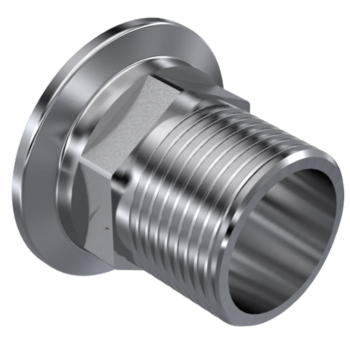Buttweld Pipe Fittings Suppliers
ASME B16.9, B16.28 Manufacturer
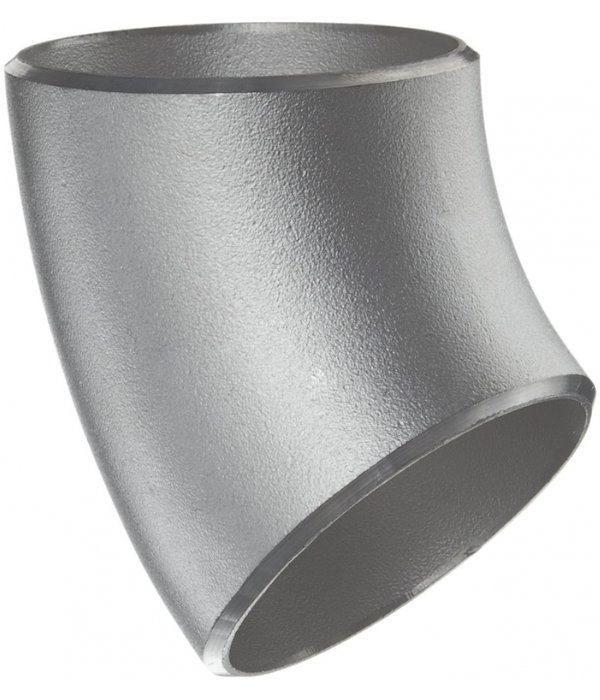
ASME B16.9 Fittings: Dimensions | Specifications | Material Grade | About Butt-weld Fittings | All Product Types
Nutech is a trusted supplier and manufacturer of Buttweld Pipe Fittings, engineered to meet global piping standards such as ASME B16.9, B16.28, and MSS-SP-43. Designed for permanent welded connections, our buttweld fittings are widely used in critical applications across oil & gas, petrochemicals, power generation, shipbuilding, and water treatment projects. These fittings ensure leak-proof flow management, seamless fluid transmission, and superior mechanical strength in high-pressure and high-temperature systems.
We offer a complete range of Buttweld Fittings including 45° and 90° Elbows (Long & Short Radius), 180° Return Bends, Equal and Reducing Tees, Concentric and Eccentric Reducers, Caps, Crosses, Stub Ends (Type A, B, C), Long Radius Bends, and Custom Fabricated Fittings. All fittings are available in Seamless, Welded, and Fabricated types, covering sizes from ½″ NB to 72″ NB and schedules from Sch 10 to XXS, including special wall thicknesses like SCH 5S, 40S, and 80S.
Manufactured from premium raw materials such as Stainless Steel, Carbon Steel, Alloy Steel, Duplex (UNS S31803), Super Duplex (UNS S32750/S32760), Inconel, Monel, Hastelloy, Titanium, Copper Nickel, and other high-performance alloys, our BW fittings meet stringent dimensional tolerances and quality controls. Each fitting conforms to the required wall thickness (ASME B36.10/B36.19), pressure rating, heat treatment, and NDE requirements, ensuring superior durability and weld integrity.
To cater to varied project requirements, we also supply fittings compliant with international norms including EN 10253, DIN 2605, JIS B2311, ISO 5251, BS 1640, and GOST. Nutech offers full traceability, inspection documentation, and customized end-preparation as per client specifications (Beveled Ends as per ASME B16.25, plain or threaded on request).
Buttweld Pipe Fittings Manufacturer & Exporter in India – Elbow, Tee, Reducer, Cap, Stub End as per ASME B16.9 & B16.28 Standards for Oil & Gas, Petrochemical, Power, and Marine Industries.
For complete technical details, including dimensions, pressure ratings, weight charts, and material specifications of our B16.9 Seamless Pipe Fittings, please download the full Catalog PDF below.
Supplying Seamless and Welded Buttweld Fittings in Sizes ½″ NB to 72″ NB, Schedules SCH 10 to XXS in Carbon Steel, Stainless Steel, Duplex Steel, and High Nickel Alloys for Global Pipeline Systems.
Technical Specifications of ASME B16.9 Buttweld Fittings
| Specification | Details |
|---|---|
| Product Types | Elbow (90°, 45°, 180°), Tee (Equal, Reducing), Reducer (Concentric, Eccentric), End Cap, Stub End, Pipe Bend, Cross |
| Manufacturing Standards | ASME B16.9, ASME B16.28, MSS-SP-43, EN 10253, ISO 5251, DIN 2605, JIS B2313 |
| Size Range | ½″ NB to 72″ NB (DN15 to DN1800) |
| Wall Thickness (Schedules) | SCH 10, 20, 40, STD, 60, 80, XS, 100, 120, 140, 160, XXS |
| Connection Type | Buttweld (Seamless, Welded, Fabricated) |
| End Connections | Plain End, Beveled End |
| Testing & Inspection | Hydrostatic Test, PMI, UT, RT, Visual, Dimensional Inspection, NDT |
| Surface Finish | Black Painted, Pickled, Sand Blasted, Oil Coated |
| Applications | Oil & Gas Pipelines, Power Generation, Desalination Plants, Chemical Industries, Refineries, Shipbuilding, LNG Projects |
| Origin | Made in India (by Nutech Overseas) |
| Export Network | USA, Europe, and Middle East |
Complete Material Grade Chart - ASME B16.9 Fittings
| Material | Grades / Standards / UNS Numbers |
|---|---|
| Stainless Steel Pipe Fittings | ASTM A403 WP304 / WP304L, WP316 / WP316L, WP310S, WP321 / WP321H, WP347 / WP347H, WP904L, UNS S30400, S30403, S31600, S31603, S31008, S32100, S32109, S34700, S34709, N08904, EN / DIN 1.4301, 1.4306, 1.4401, 1.4404, 1.4541, 1.4550, 1.4571 |
| Carbon Steel Pipe Fittings | ASTM A234 WPB / WPC, ASTM A105, ASTM A106 Gr B, ASTM A350 LF2 CL.1/2, MSS-SP-75 WPHY 42, 46, 52, 56, 60, 65, 70 |
| Low Temperature Carbon Steel Pipe Fittings | ASTM A420 WPL3, WPL6 |
| Alloy Steel Pipe Fittings | ASTM A234 WP1, WP5, WP9, WP11, WP12, WP22, WP91, ASTM A182 F1, F5, F9, F11, F12, F22, F91 |
| Duplex Steel Pipe Fittings | ASTM A815 UNS S31803, S32205, EN/DIN 1.4462 |
| Super Duplex Steel Pipe Fittings | ASTM A815 UNS S32750, S32760, EN/DIN 1.4410, 1.4501 |
| Nickel Alloys Pipe Fittings | ASTM B366, Nickel 200 (UNS N02200), Nickel 201 (UNS N02201), Inconel 600 (N06600), 601 (N06601), 625 (N06625), Incoloy 800 (N08800), 800H (N08810), 825 (N08825), Monel 400 (N04400), K500 (N05500), Hastelloy C22 (N06022), C276 (N10276), Alloy 20 (N08020), Nimonic 75 / 90 |
| Copper Nickel Pipe Fittings | ASTM B466 / B467 / B122 / B171, Cu-Ni 90/10 (C70600), 70/30 (C71500), EN/DIN CuNi10Fe1Mn, CuNi30Mn1Fe |
| Titanium Pipe Fittings | ASTM B363, B381, Grade 1 (UNS R50250), Grade 2 (UNS R50400), Grade 5 (UNS R56400) |
| Aluminium Pipe Fittings | ASTM B361, ASTM B241, Aluminium 6061, 6082, 7075 |
| Brass Pipe Fittings | ASTM B62, C23000 (Red Brass), C26000 (Cartridge Brass) |
| Bronze Pipe Fittings | ASTM B148, Tin Bronze, Aluminium Bronze (C95400), Leaded Bronze (C93200) |
| 254 SMO Pipe Fittings | ASTM A403 WP S31254, ASTM A182 F44, UNS S31254, DIN 1.4547 |
Seamless and welded buttweld pipe fittings serve the same fundamental purpose—connecting, redirecting, or terminating pipelines—but they differ significantly in terms of manufacturing process, pressure tolerance, and ideal applications.
Seamless Buttweld Fittings are made from a solid round billet that is heated and then extruded without any welding seam. This results in a uniform structure with no weak points, making them ideal for high-pressure, high-temperature, and corrosive environments, such as power plants, offshore oil rigs, nuclear facilities, and refineries. They comply with standards such as ASME B16.9 and offer better fatigue resistance and structural integrity.
Welded Buttweld Fittings, on the other hand, are produced by rolling metal plates into a cylindrical shape and welding them along the seam. These are more cost-effective and suitable for low-to-moderate pressure pipelines, especially in large diameters. While modern welding techniques ensure strong joints, they may not match the uniformity and strength of seamless fittings under extreme conditions.
Performance Impact:
- Pressure Handling: Seamless is greater than Welded
- Cost: Welded is less than Seamless
- Applications: Seamless for critical operations; Welded for general purpose piping
- Inspection Requirements: Welded often requires more NDT (Non-Destructive Testing)
For most industrial applications, selection depends on the process requirements, budget, and design codes, such as ASME B31.1, B31.3, or project-specific standards.
Buttweld pipe fittings are governed by several internationally recognized standards to ensure uniformity, compatibility, and performance across critical piping systems in industries such as oil & gas, petrochemical, power generation, and marine.
The most commonly followed standards include:
- ASME B16.9 – Standard for factory-made wrought buttwelding fittings (elbows, tees, reducers, caps) up to 24″ NPS (DN600).
- ASME B16.28 – Focused on short-radius elbows and return bends.
- MSS-SP-75 – For high-strength, butt-welded fittings used in high-pressure transmission and distribution systems.
- EN 10253 (European Standard) – Covers butt welding fittings made of steel for pressure purposes.
- DIN 2605 / 2615 / 2616 / 2617 – German standards for elbows, tees, reducers, and caps.
- ISO 5251 & ISO 3419 – Global equivalents of ASME/EN standards.
Dimensional Specifications:
- Sizes range typically from ½” NB to 72” NB (or DN15 to DN1800), depending on design.
- Wall thicknesses comply with ASME B36.10 (for carbon steel) and ASME B36.19 (for stainless steel) schedules (e.g., SCH 10, 40, 80, 160, XXS).
- End preparation: Beveled Ends (BE) as per ASME B16.25 for welding.
Why It Matters for Projects:
Following the correct standard ensures:
- Dimensional compatibility with pipes and flanges
- Material traceability
- Structural reliability under specific temperature & pressure ratings
- Compliance with project codes like ASME B31.3 (Process Piping) and B31.1 (Power Piping)
Non-destructive testing (NDT) is a crucial part of the quality assurance process for buttweld pipe fittings, especially for high-pressure or critical service applications such as oil & gas, petrochemicals, and power generation.
The following NDT methods are commonly applied based on project requirements, international codes (like ASME, ASTM, API), and customer specifications:
Common NDT Techniques:
- Visual Inspection (VT): First-line inspection to verify surface finish, bevel ends, and dimensions.
- Ultrasonic Testing (UT): Detects internal flaws like cracks, voids, and lamination, especially in thick-wall fittings.
- Radiographic Testing (RT): Uses X-rays or gamma rays to inspect weld integrity and detect subsurface defects.
- Magnetic Particle Testing (MPT): Identifies surface and slightly subsurface cracks in ferromagnetic materials.
- Liquid Penetrant Testing (LPT): Detects fine surface-breaking flaws on both ferrous and non-ferrous metals.
- Positive Material Identification (PMI): Ensures correct material grade and chemical composition using portable analyzers.
NDT Certifications and Traceability:
- All NDT procedures are performed by Level II / Level III certified inspectors in accordance with ASNT SNT-TC-1A or equivalent standards.
- Fittings are provided with complete traceability reports, including Mill Test Certificates (MTC), NDT reports, and heat numbers.
The wall thickness schedule of a buttweld pipe fitting — designated as SCH 10, SCH 20, SCH 40, SCH 80, SCH 160, XXS, etc. — plays a crucial role in determining its pressure-handling capacity, mechanical strength, and application suitability.
Key Impacts of Wall Thickness on Buttweld Fittings:
- Pressure Rating:
Thicker wall fittings (e.g., SCH 80 or SCH 160) are designed for high-pressure systems. For example, SCH 40 is widely used in general industries, while SCH 160 or XXS are preferred in refineries and high-pressure steam lines.
- Flow Characteristics:
Incorrect wall thickness can cause flow restrictions or turbulence. Thicker walls may reduce internal diameter, affecting velocity and flow rate — especially critical in piping systems designed for specific flow criteria.
- Welding Compatibility:
Matching pipe and fitting wall thickness ensures consistent weld penetration, joint strength, and minimizes weld defects like lack of fusion or undercuts.
- Cost and Weight Consideration:
As the wall thickness increases, so does the material cost and overall weight, impacting shipping, fabrication, and structural design.
- Common Standards Covered:
ASTM B36.10M and B36.19M define wall thickness schedules for carbon and stainless steel fittings. Buttweld fittings are manufactured in full compliance with these for seamless system integration.
Dimensional tolerances in Buttweld Pipe Fittings are defined by ASME B16.9, ensuring each fitting meets strict criteria for fit, weldability, and system integrity. These tolerances cover aspects such as outside diameter, wall thickness, center-to-end dimensions, and squareness of ends, which are critical for proper installation and performance.
Key Tolerances as per ASME B16.9:
- Outside Diameter Tolerance (OD):
±1% for fittings NPS ≤ 4″ and ±0.75% for NPS is greater than 4″, ensuring compatibility with mating pipes.
- Wall Thickness Tolerance:
There’s no specific upper limit for thickness (can be thicker than pipe), but the minimum wall thickness must match the pipe schedule to ensure pressure containment.
- Center-to-End & Overall Length Tolerances:
±1.5 mm (±0.06″) for NPS ≤ 1½″, and up to ±6 mm (±0.25″) for larger sizes — critical for pipe alignment and layout accuracy.
- Squareness of Ends & Bevel Angle:
End cuts must be square to the pipe axis with a ±5° tolerance on the standard 37.5° bevel, which affects welding preparation and joint quality.
- Concentricity and Ovality:
Limits are placed on ovality and eccentricity to ensure smooth flow characteristics and reduce turbulence or vibration in high-speed flow systems.
Precision in these tolerances ensures that fittings fit perfectly without rework, maintain pipeline pressure integrity, reduce installation time, and comply with industrial standards and inspections, especially in industries like oil & gas, power plants, petrochemical, and shipbuilding.
Hot forming and cold forming are two primary manufacturing processes for buttweld pipe fittings, each with distinct technical characteristics:
- Hot Forming Process:
- Involves heating the pipe material above its recrystallization temperature, typically between 800°C to 1000°C.
- Commonly used for larger diameter fittings and high wall thicknesses.
- Allows better shaping and stress relief during deformation.
- Ideal for producing elbows, tees, reducers, and caps that require complex bends.
- Standards followed: ASME B16.9, MSS-SP-75, etc.
- Cold Forming Process:
- Performed at room temperature or slightly elevated temperatures, without significant heating.
- Offers tighter dimensional tolerances, better surface finish, and higher strength due to strain hardening.
- Mostly used for small to medium size fittings and thin-walled components.
- Cost-effective and preferred for mass production.
The choice between hot and cold forming depends on the material, fitting size, intended application, and mechanical requirements of the piping system.
Nutech exports buttweld pipe fittings to a wide range of international markets including the USA, Middle East (UAE, Saudi Arabia, Qatar, Oman), Southeast Asia (Philippines, Malaysia, Indonesia), Africa (Nigeria, Egypt, South Africa), Europe (Germany, Spain, Italy, France), and South America (Brazil, Chile, Argentina).
These regions choose Nutech for the following reasons:
- Compliance with Global Standards: Manufactured to ASME B16.9, MSS SP-43, EN 10253, DIN, ISO, and other international standards.
- Diverse Material Options: Available in Stainless Steel, Carbon Steel, Alloy Steel, Duplex & Super Duplex (UNS S31803 / S32750), Nickel Alloys, and more.
- Reliable Export Support: Complete documentation including EN 10204 3.1 MTCs, marking, stamping, and seaworthy packaging for international logistics.
- Proven Track Record: Trusted by EPC contractors, fabricators, and industrial end-users in sectors like oil & gas, petrochemical, marine, and power plants.
- Fast Dispatch & Delivery: With strategic logistics support from Indian ports like JNPT, Mundra, and Chennai.
Nutech’s reputation for quality, precision engineering, and responsive service makes it a preferred supplier of buttweld pipe fittings in these global markets.
Browse The Products
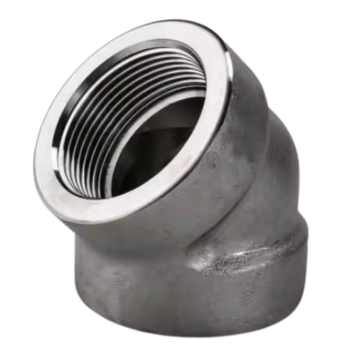
Forged Fittings
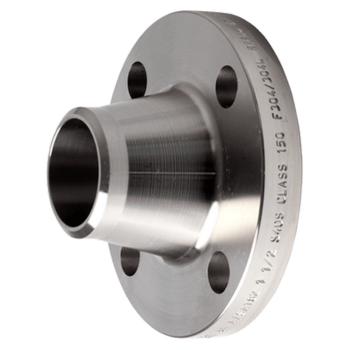
Flanges
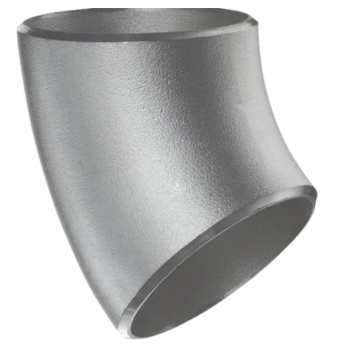
Buttweld Fittings
